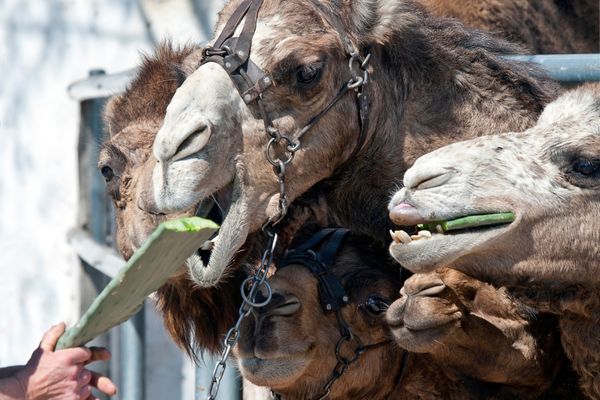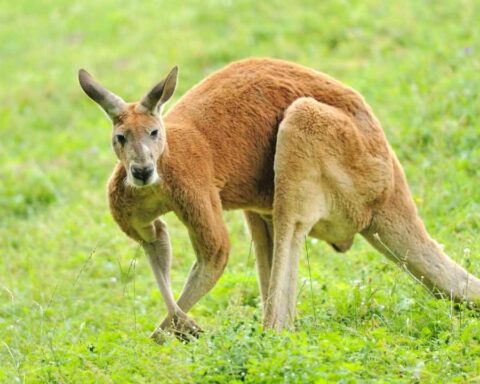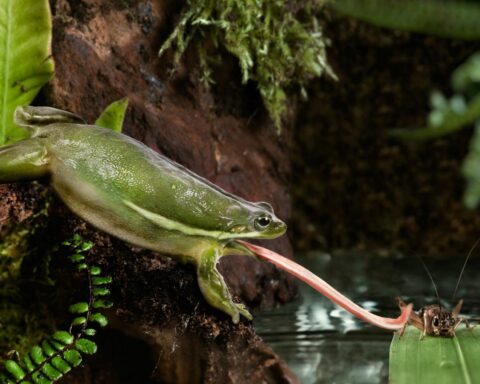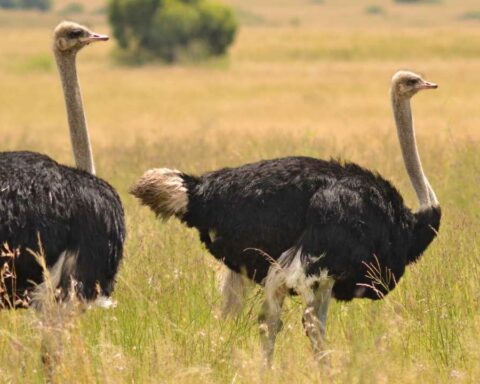Camels are remarkable creatures that have evolved a unique set of behavioral, structural, and physiological adaptations to thrive in the harsh desert environments they inhabit. These adaptations enable the to cope with extreme temperatures, arid conditions, and scarce resources, making them some of the most resilient animals on Earth. Their behavioral adaptations, such as foraging habits and social behavior, allow them to efficiently locate and consume food and water, while their structural features, like humps and long legs, provide them with the ability to store energy and traverse challenging terrain. Furthermore, their physiological adaptations, including water conservation, temperature regulation, and efficient digestion, help camels maintain their bodily functions and overall health in the face of adversity. In this overview, we will delve into the intricate and fascinating adaptations of a camel that have allowed them to survive and thrive in some of the world’s most inhospitable environments, such as the deserts of the Middle East, North Africa, and Central Asia.
Adaptations Of A Camel
Behavioral Adaptations Of A Camel
Camels are highly adapted to their harsh desert environments. Their unique behavioral adaptations, alongside their physical traits, enable them to survive in extreme temperatures and arid conditions. Here are some of the primary behavioral adaptations of camels:
Foraging and dietary habits:
Camels are herbivores and can consume a wide variety of vegetation, including thorny plants, saltbushes, and grasses. They have adapted their foraging behavior to consume the available plant resources in their desert habitat. Their strong, flexible lips allow them to graze on tough, thorny plants without injury. They can also consume salt-laden plants, which other animals avoid, helping them maintain a balance of electrolytes and water in their bodies.
Water conservation and intake:
Camels can go for long periods without drinking water, thanks to their ability to conserve water and store fat in their humps. When they do find water, they can drink large amounts quickly – up to 30 gallons (113 liters) in just 13 minutes. This behavior helps them replenish lost fluids and survive extended periods of drought.
Nocturnal and crepuscular activity:
Camels are primarily active during the cooler parts of the day, such as dawn and dusk, and may rest during the hottest hours. This behavior helps them conserve energy and water by avoiding exposure to the sun’s most intense rays. They may also be active during the night, as desert temperatures drop significantly after sunset.
Social behavior and group living:
Camels are social animals, typically living in groups called herds or caravans. These groups are often led by a dominant male and consist of females and their offspring. Living in groups offers protection against predators and allows for cooperative care of young camels. Group living also helps camels find food and water sources more effectively through shared knowledge and experience.
Migratory behavior:
Camels can cover long distances in search of food and water. Their migratory behavior allows them to locate and exploit scarce resources in their desert environment. Their strong, sturdy legs and padded feet are well-suited to long-distance travel on rough terrain and sand.
Heat avoidance and sand bathing:
Camels may lie down on the hot sand during the day, with their legs tucked beneath them. This behavior helps them avoid direct contact with the scorching sand and minimizes heat absorption. Camels can also regulate their body temperature by adjusting the flow of blood to their extremities.
Communication and body language:
Camels use a variety of vocalizations, body postures, and facial expressions to communicate with each other. For example, they may produce a series of grunts or bellows to establish dominance or attract mates. They can also communicate their mood or intention through body language, such as raising their head, flattening their ears, or swishing their tail.
Structural Adaptations Of A Camel
Camels have developed various structural adaptations to help them survive and thrive in harsh desert environments. These physical features enable them to cope with extreme temperatures, arid conditions, and scarce resources. Here are some of the main structural adaptations of camels:
Humps:
Camels have one or two humps on their backs, depending on the species (dromedary camels have one, while Bactrian camels have two). These humps store fat, which can be metabolized to produce energy and water when resources are scarce. This adaptation allows camels to travel long distances and survive extended periods without food or water.
Long legs and large, padded feet:
Camels have long, sturdy legs that help them stay elevated above the hot desert sand and navigate rough terrain. Their large, padded feet distribute their weight evenly, preventing them from sinking into the sand and providing extra grip on rocky surfaces.
Thick fur and specialized skin:
Camels have a thick coat of fur that insulates them from extreme temperatures, keeping them warm during cold desert nights and protecting them from the intense sun during the day. Their skin is also adapted to withstand the desert environment, being thick and leathery to minimize water loss and protect against sunburn.
Nostrils and nasal passages:
Camels have specialized nostrils that can be closed to prevent the intake of sand and dust during sandstorms. Their nasal passages are lined with hair and mucus to filter out particles, and they can also reabsorb moisture from exhaled air, reducing water loss.
Long eyelashes and third eyelid:
Camels have long, thick eyelashes that protect their eyes from sand and dust. They also have a transparent third eyelid, called the nictitating membrane, which can be drawn across the eye to remove debris and maintain moisture while still allowing the camel to see.
Specialized kidneys and concentrated urine:
Camels have highly efficient kidneys that can conserve water by producing highly concentrated urine. This adaptation helps them retain more water in their bodies and survive extended periods without drinking.
Temperature regulation:
Camels can tolerate a wide range of body temperatures, from 34°C (93°F) to 41°C (106°F). This adaptation allows them to avoid overheating during the day and stay warm during the cold desert nights. They can also regulate their body temperature by adjusting the blood flow to their extremities, conserving heat when necessary.
Unique blood cells:
Camel red blood cells are oval-shaped, unlike the circular shape found in most mammals. This adaptation allows their blood cells to maintain functionality even when dehydrated, ensuring efficient oxygen transport and helping them survive in water-scarce environments.
Physiological Adaptations Of A Camel
Camels have evolved various physiological adaptations to survive and thrive in the harsh desert environments they inhabit. These adaptations enable them to cope with extreme temperatures, arid conditions, and scarce resources. Here are some of the main physiological adaptations of camels:
Water conservation:
Camels have the ability to conserve water by minimizing water loss through various physiological processes. They can tolerate dehydration, losing up to 25% of their body weight in water before experiencing serious effects. In comparison, most mammals can only tolerate a 12-14% loss. Their highly efficient kidneys and concentrated urine also help them retain more water in their bodies.
Efficient energy utilization:
Camels store fat in their humps, which can be metabolized to produce energy and water when resources are scarce. This allows them to travel long distances and survive extended periods without food or water. Additionally, by storing fat in their humps rather than throughout their bodies, camels can reduce heat insulation and avoid overheating.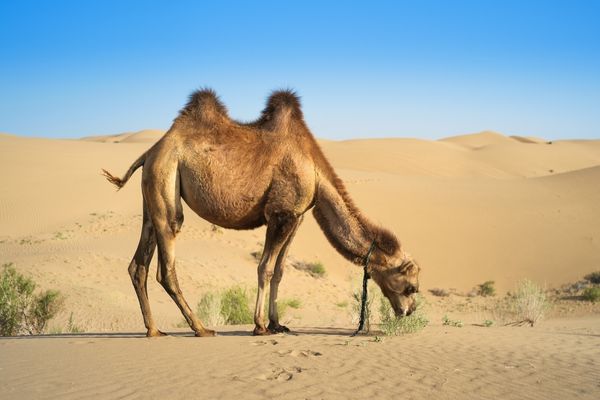
Tolerance to temperature fluctuations:
Camels can tolerate a wide range of body temperatures, from 34°C (93°F) to 41°C (106°F), allowing them to avoid overheating during the day and stay warm during the cold desert nights. They can also regulate their body temperature by adjusting the blood flow to their extremities, conserving heat when necessary.
Blood volume and composition:
Camels have a large blood volume relative to their body size, which helps them maintain circulation and blood pressure during dehydration. Their blood contains unique proteins called serum albumins, which help maintain the blood’s viscosity and prevent it from becoming too thick when the camel is dehydrated. Additionally, camel red blood cells are oval-shaped, allowing them to maintain functionality even when dehydrated and ensuring efficient oxygen transport.
Efficient digestion:
Camels are ruminants with a complex, multi-chambered stomach that allows them to break down and extract nutrients from the tough, fibrous plants they consume. They can also tolerate a higher level of salt in their diet than most animals, enabling them to feed on salt-rich plants and maintain their electrolyte balance.
Respiratory system adaptations:
Camels have a unique respiratory system, with large lungs and a large surface area for gas exchange. This enables them to extract the maximum amount of oxygen from the air, even in low-oxygen environments. Their nasal passages are also adapted to retain moisture by reabsorbing water from exhaled air, reducing water loss.
Immune system adaptations:
Camels have a robust immune system that can produce unique antibodies called nanobodies, which are smaller and more stable than conventional antibodies. These nanobodies can be useful in various biotechnological and medical applications, including the development of new drugs and diagnostic tools.

